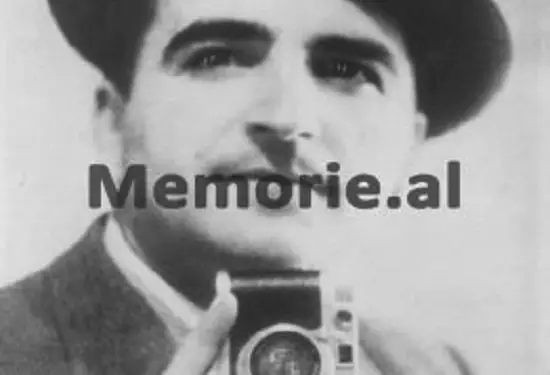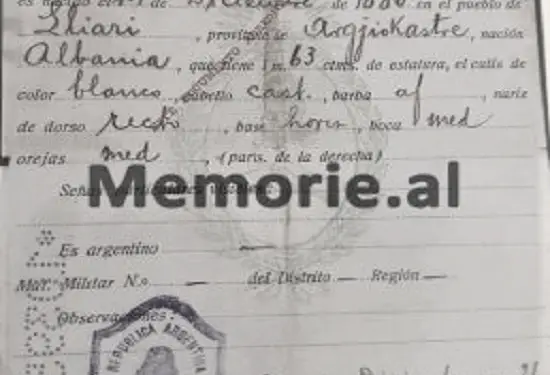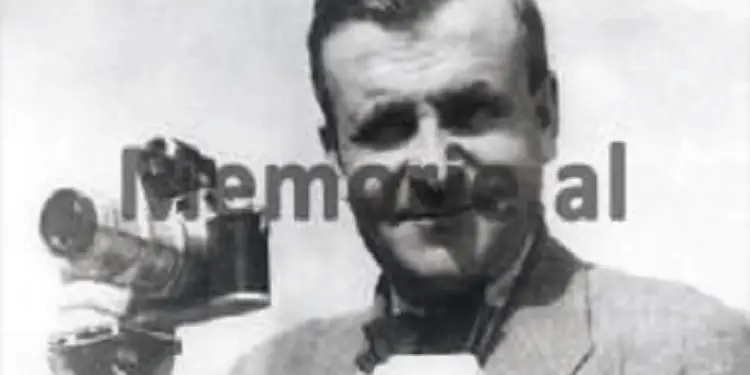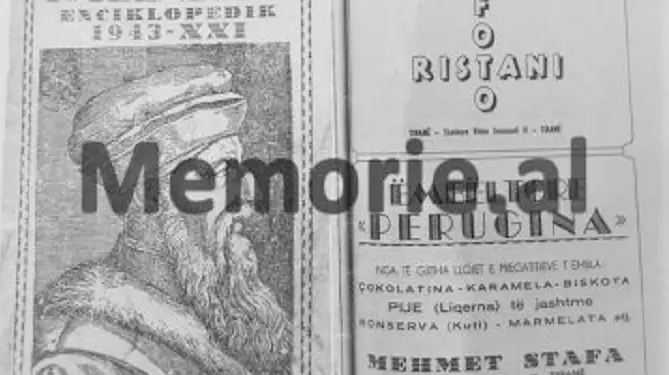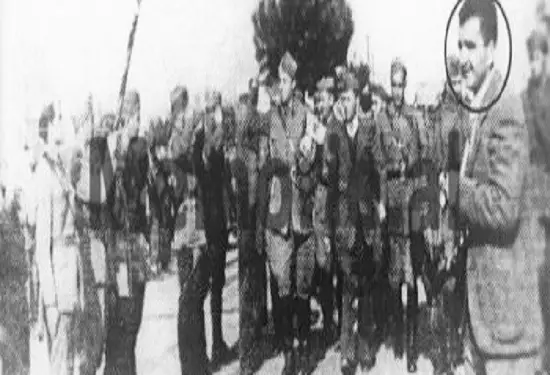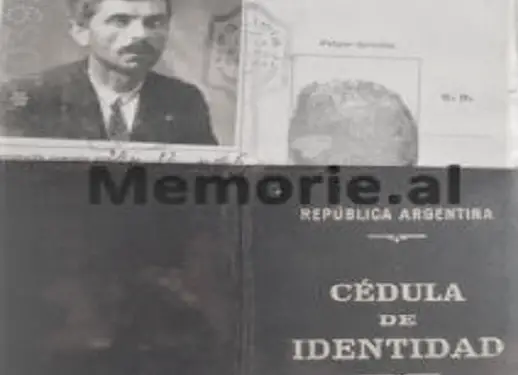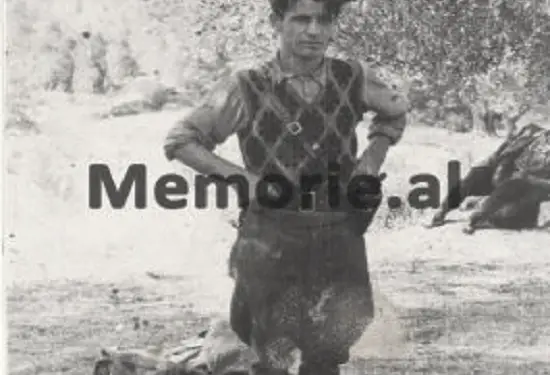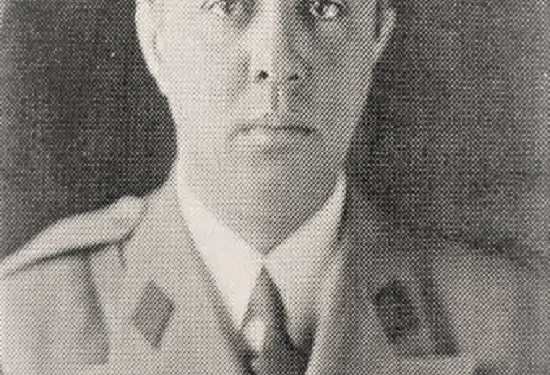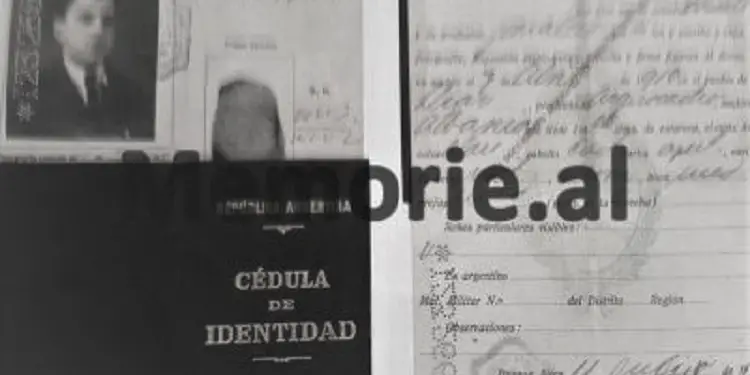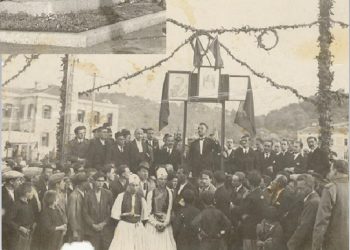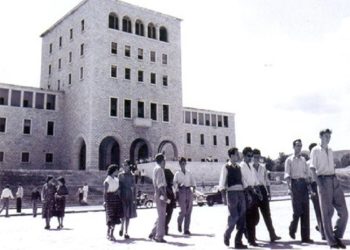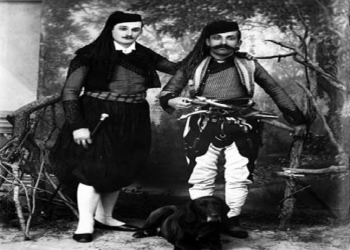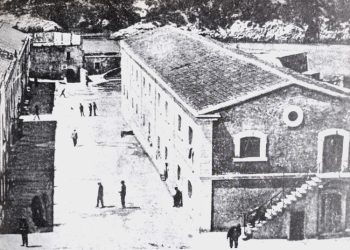Dashnor Kaloçi
Memorie.al publishes the unknown story of the Ristani family originating in the Zagoria of Gjirokastra, where their ancestors, Vasili and Jani, had emigrated to Istanbul and Argentina because of the severe poverty that prevailed in that province. after returning to Albania, they settled in Tirana were, with their savings, in 1935 they opened their own “Photo-studio Ristani” on Boulevard “Zogu I” in front of Hotel “Donika” where they soon became recognized and forced King Zog to call them to the ceremonies held on the occasion of his wedding.
How the Ristans continued their profession of photographer even during the occupation of the country, fixing rare images from the War for the Liberation of Tirana and immediately after the War, in December 1944, Vasil Ristani went and made Enver Hoxha’s photo his first official as prime minister, which was made possible by the cabinet chief, Alqi Kondi. What followed during the communist regime was the professional career of the Ristani family, who practiced it for four generations, which is still continued by Petrit, the last of that famous dynasty, who with their apparatus, for more than For a century, historical moments have been fixed in the history of Albania.
“It was December 1944, when my father, Vasil Ristani, went to Enver Hoxha’s house, and told his secretary, Alqi Kondi, that he wanted to take a picture of the Commander, as Enver was then called. Alqi Kondi phoned Enver and told him that Ristani had arrived, asking him to take a photo for the press. Enver immediately approved the request and told Alqi to put it inside Vasil to make the picture he was looking for. Dad was close because he didn’t think it was going to be that easy, and considering that, he didn’t take the camera with him. In those moments, he told Alqi Kondi that he was not ready, having only gone to ask her, and then he rode his bicycle and hurried off to the store to get the camera to take pictures of Enver Hoxha, who was waiting for him in his office. “Petrit, son of Vasil Ristan, first made public for Memorie.al, that distant December 1944 event, when his father, one of the most famous and famous photographers of the capital since the time of the Zogu Monarchy.. headed towards the house of the Commander-in-Chief of the National Liberation Army and at the same time the Prime Minister of the Government, Colonel Enver Hoxha, to ask him to take a photo of the newspapers that were published at that time. But who was Vasil Ristani, what was the origin of his family and where did he learn the profession of the photographer? What assurance did he have that Enver Hoxha asked for it when by that time none of his colleagues had dared to think of it?
Ristani, an immigrant to Istanbul
Petrit’s father, Vasil Ristani, was born in 1908, in the village of Lliar, in the Zagoria region, which was part of the Gjirokastra Region. At that time the inhabitants of the villages of Zagoria province were living in great poverty because of the very conditions that the mountainous area had. Given the fact that in the early years of the last century, the villagers of that region had chosen the livestock route as a means of livelihood. One of them was Vasil Ristani, who at a very young age, in 1919, when he was no more than 11 years old, took the long way to emigration to Turkey. Arriving in the capital of the Ottoman Empire in Istanbul, little Basil was received by his uncle Koco Ristani, who had emigrated there many years ago and worked as a grocer, selling dairy products. Koco took Vasil to live in his house, then arranged for his grandson to work as a street vendor in the streets of Istanbul. Alongside that job, little Basil was eager to become a musician, and with the money he had saved, he bought a violin to try to play various parts there at his uncle’s house. After some time from the day Basil bought the violin, his uncle Koco was annoyed by the noise of her annoying sounds and broke it to pieces. Then, not to upset the little grandson, he gifted him a camera and recommended that he learn the photographer’s craft. After that, Basil liked it and began to get his first knowledge of that craft in Istanbul’s photo studios. For a short time, he learned to make very good photographs and sent them to his home in the village of Lliar of Zagoria in Gjirokastra.
From Istanbul to Argentina
After staying in Istanbul for about seven years, in the summer of 1926, Basil returned to his native village of Lliar. After spending only a short time there, he set out again on the far-flung path to South America, in remote Argentina, where his father Kiço Ristani, who had emigrated there years ago, along with some Zagori compatriots. Even in distant Argentina, Vasil did the same job he had done in Istanbul, selling goods as an ambulance trader. He worked for that job for ten years, until 1935, when he made his way back to Albania. By working in the ambulance trade, Basil earned a large sum of money, which forced him to return to his home country, where he had not trespassed for ten years. When he came to Albania, he stayed in his village for a short time, and together with his uncle Uncle Janin, who at that time returned from Istanbul, moved to Tirana. During the years that Jani had been a migrant to Istanbul, he had been able to open a small photography shop and had acquired the craft quite well. After arriving in the capital, Vasilin, along with Uncle Jani, mobilized them and sent them to perform compulsory military service in Tirana. Upon release from the army, they decided not to return to their village anymore, but to stay in the capital by opening a photography shop there. So they made their decision a reality and opened their first photography shop in Tirana, on Zogu I Boulevard (near the former Donika Restaurant).
Photo studio Ristani in 1935
For the opening of that store called “Photo-studio Ristani”, Basil made the money he had been sweating out of his long work in Argentina, and his uncle Jani invested in the craft. his experience as a photographer he had learned in Istanbul. The photo-studio “Ristani”, which opened at the time Basil with Jan, was one of the most modern of the time. Soon, taking advantage of the favorable position of their store, which was near the main boulevard and Skanderbeg Square in central Tirana, they made a good name and were able to win a large clientele. Given this, in 1937, at the grand celebrations on the occasion of the 25th anniversary of the Independence of Albania, which was celebrated with numerous parades and ceremonies, Vasili and Jan were summoned to the Royal Palace, where they would fasten on their apparatus. moments from those jubilee ceremonies, where the highest officials of the state and the Royal Court, and King Zog himself, would assist. Along with Vasil and Janin, other photographers were also invited, such as Keli and Gege Marubi, wife of the Austrian photographer Wiesman who was a personal friend of King Zog, Mihal Popi (famous actor) Dede Jakova, Ali Bakiu (on 1945 Mayor of Tirana) Ymer Bali, Mandi Koci (later photographer of Enver Hoxha and General Staff) and photographers of “Foto Maca” and those of “Foto-Dajti” (Arvriqi with Kelmendi). On the morning of the evening of November 28, where Basil and Jan made numerous photographs, in their storefronts, they posted all the photos they had taken at the occasion. The same day, in their shop “Photo-studio Ristani”, went to visit a photographer from Shkodra Kel Marubi, along with his son Gega. The famous Marubis (father and son) had come from Shkodra to Tirana, as they were also the official photographers of the Royal Court and of King Zog personally. Keli, after seeing all the photos Basil had done with Jan, congratulated them and addressed his son: “Gege, take an example from these guys. This work that they have done for a day, it would take me a week to do.
“Press photographer, and at Zog’s wedding
In addition to his studio, Vasili began to get active with various media outlets, fixing different pictures, mainly from reporters doing reporters. After gaining a good name in this regard, he was called by the editorial staff of the newspaper Drita to work exclusively for that newsroom. So during those years, Vasili with his camera toured almost all parts of Albania, obsessing over hundreds of different pictures, which were reflected in the press of the time. Vasil Ristani was also invited and participated as a photographer in all the official activities and celebrations that took place at that time. In this context, he was invited and participated in the ceremony of King Zog’s marriage with the Hungarian Countess Gerlardine Apony, the ceremony which took place on the premises of the “International” hotel. After a few years, from the income they earned, Basil built a house on Kavaja Street and by the end of 1942, he built another on Fortuzi Street. Since 1935, when Basil and his uncle Janine opened their shop, and throughout the occupation of the country, they only engaged in their craft of photography, not interfering and engaging in any other character activity. political. They devoted themselves solely to photography and were regularly supplied with the necessary film material by Ali Bakiu, who had the AGFA franchise in Albania. During the occupation, (1939-’44) Vasili photographed moments of war and Tirana destroyed by aviation bombings, still in good condition, in the Ristani family photo archive. On the 28th of November 1944, when the Provisional Government headed by Enver Hoxha came from Berat to Tirana, Vasili met them as they came down from the cars to the Lana Bridge on the Elbasan road and accompanied them, taking photos of them. various before the Dajti Hotel, where a large parade of victorious partisans took place.
Enver Hoxha poses for Ristani
When only a few days had passed since the end of the war, by the end of December 1944, Vasil Ristani left for the home of Enver Hoxha, or the Commander, as he was then called, with the thought of asking him to `took a picture, which was requested by various media outlets at that time. Related to this, his son, Petrit Ristani, who inherited the craft of his father and uncle Jan, working for 30 years in the military press, testifies to that distant event when his father photographed Enver Hoxha, head of the communist state. “The father left for Enver’s house, thinking to ask if he would agree to be photographed. He told the story to Alqi Kondi, who was then secretary of Enver Hoxha. Alki telephoned Enver at once and conveyed his request to Basil. On the other side of the phone, Enver ordered Ristani to be allowed to enter his home, to make the photo he was looking for. The father confided that he had not foreseen that it would be so easy and that he had not even taken the camera with him. That response embarrassed my father, and he immediately rode his bike to the store to retrieve the device and returned soon to where Enver was waiting. Basil pulled out a white sheet of paper that he kept in the store for background photography and gave it to the three partisans who were Enver’s personal guards. After that, Enver came in front of the sheet and his father made nine shots. Before making his last shot, his father told Enver to smile a little, since he was very upright. Enver replied to his father, ‘I can’t laugh because we come from War.’ After that, the father left Enver’s house and stamped the pictures for two or three hours and sent them to Alqi Kondi to give them to the Commander to see. Enver liked that photo and signed it for publication, ”Petriti recalled the incident, when his father Vasili fixed Enver Hoxha, becoming his first official photographer.
40 Napoleons for Enver’s photo
After taking Enver’s photo, Vasil was called to the Tirana Municipality, where one of her bosses, Drit Çaushi, asked him to reproduce the photo he made to Enver, wasting all the paper he had in the store, because the Commander’s portrait, you would need it for all state administration offices. Basil went to his studio and used all the scarce film material he had left, making 200 50-by-60 format photos, which he sent to Drit Caushi at his office near the Municipality of Tirana. Caushi liked that picture and asked how much money he owed. Basil told him that for the sake of the job, he wanted nothing but film material. Caushi gave him 40 napoles and Vasil spent them all, buying bread for bread as his family was in poor economic shape. Two years later, in 1947, Vasil and Jani closed a photography shop under nationalization. At that time Zeqi Agolli took Vasil to work at the Film Laboratory of the postwar Albanian state that had just opened. During that time, Vasili participated as a photographer in the Corfu Channel incident investigation team, whose photos were presented by the Albanian side and at The Hague tribunal. In the lab that later passed under the ATSH, Vasili worked until 1953. That year, when Stalin died, Vasili was the only photographer allowed by Enver Hoxha to take photos of the large funeral ceremonies that took place. organized in the “Skanderbeg” square. From that year until 1973 when he retired, Vasil Ristani worked as a photographer at the Utilities Company.
Sulo Gradeci, a student at the Ristan
By the early 1960s, Enver Hoxha’s Chief of Guards Service, Sulo Gradeci, summoned Vasil’s uncle, Jani Ristan, and hired him as a photographer in the Second Directorate of the Interior Ministry, which covered Security Assistance to the top of the communist party and state. The purpose of getting Jan into that directorship was that he had to teach Sulo Gradeci the craft of photography he would need to photograph Enver Hoxha. Thus, the craft that Sulo Gradeci appropriated so well and practiced for many years near Enver Hoxha, has the gift of Jani Ristani, Vasil’s uncle in 1944, as his first official photographer. Jani still lives to a ripe old age, and Basil separated from his life in 1989 and left his job to his son Petrit, who is known as one of the most iconic photographers of the 1990s. Memorie.al




